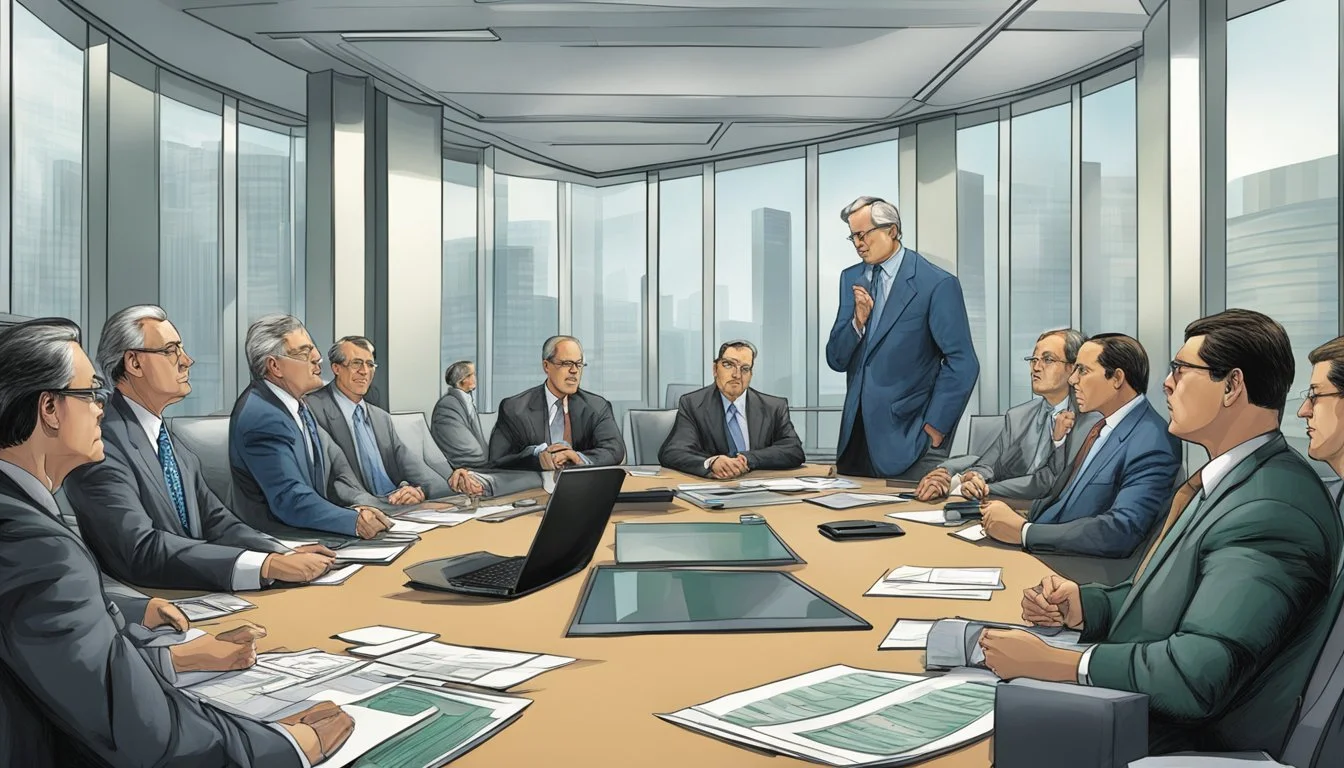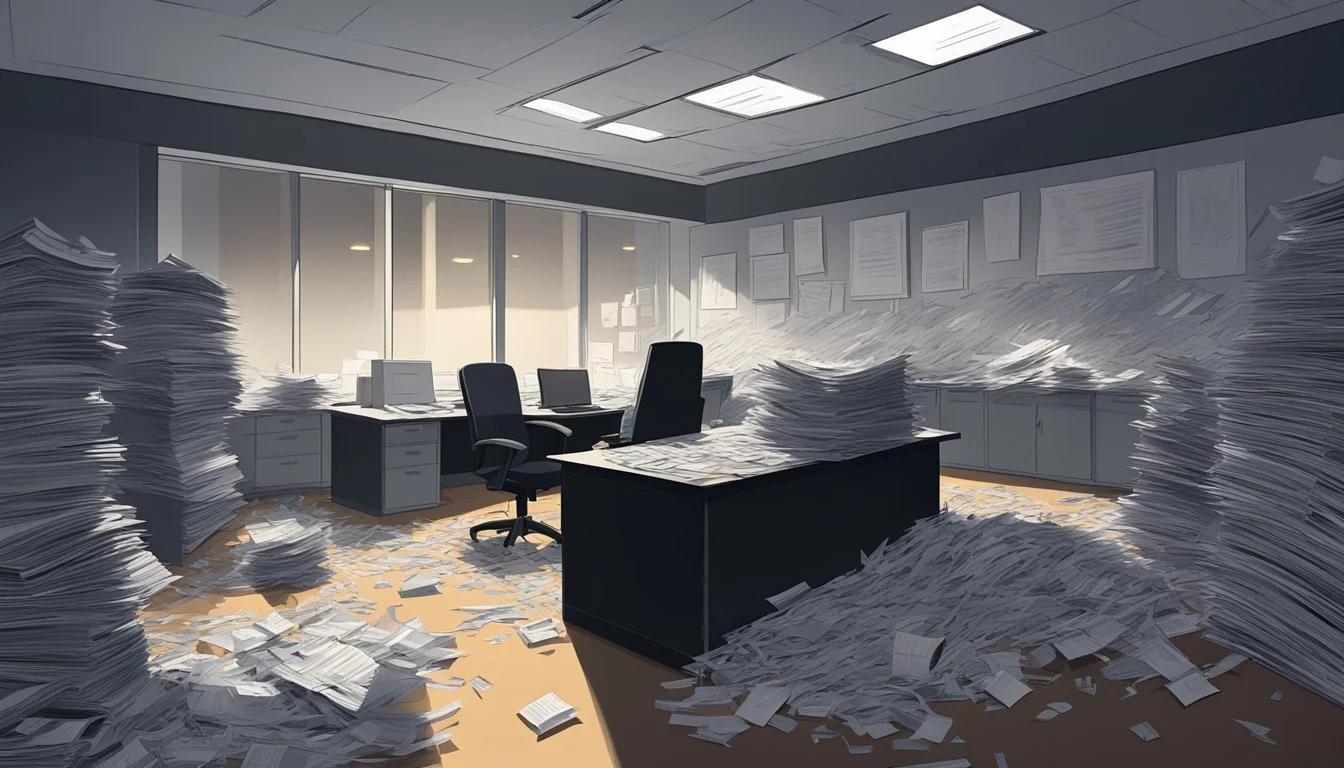Inside the Enron Scandal: Shocking Revelations from the Documentary About Enron!
The 2005 documentary "Enron: The Smartest Guys in the Room" offers a gripping exploration of one of the most infamous corporate scandals in American history. Directed by Alex Gibney, the film delves into the rise and fall of Enron Corporation, exposing the fraudulent practices and corrupt culture that led to its spectacular collapse in 2001.
Based on the bestselling book by Bethany McLean and Peter Elkind, the documentary meticulously unravels the complex web of financial deception orchestrated by Enron's top executives. It introduces key figures like Kenneth Lay and Jeffrey Skilling, whose leadership drove the company's meteoric ascent and subsequent downfall.
The film combines interviews, archival footage, and reenactments to paint a vivid picture of Enron's corporate environment. It highlights how deregulation in the energy sector and creative accounting methods enabled the company's fraudulent activities to go undetected for years. Through its compelling narrative, "Enron: The Smartest Guys in the Room" serves as a cautionary tale about corporate greed and the dangers of unchecked power in the business world.
Background of Enron
Enron rose to prominence as an innovative energy company in the 1990s before its dramatic collapse due to fraudulent practices. The company's meteoric ascent and key leadership played crucial roles in shaping its trajectory.
Founding and Growth
Enron Corporation formed in 1985 through the merger of Houston Natural Gas and InterNorth. The company initially focused on natural gas pipelines but quickly expanded into energy trading and other markets. Enron capitalized on deregulation in the energy sector, becoming a pioneer in energy derivatives trading.
By the late 1990s, Enron had transformed into a complex entity involved in electricity, natural gas, communications, and financial services. The company's rapid growth and apparent success earned it acclaim as America's Most Innovative Company for six consecutive years.
Key Figures
Kenneth Lay, Enron's founder and chairman, guided the company's strategic direction. He cultivated political connections and advocated for energy market deregulation.
Jeffrey Skilling joined Enron in 1990 and later became CEO. Known for his intellect and aggressive business strategies, Skilling pushed Enron into new markets and championed mark-to-market accounting practices.
CFO Andrew Fastow played a critical role in Enron's financial operations. He designed complex off-the-books partnerships that helped conceal the company's true financial state.
These executives' actions and decisions ultimately contributed to Enron's downfall, leading to one of the most infamous corporate scandals in U.S. history.
The Rise of Enron
Enron's meteoric ascent was fueled by an innovative business model, aggressive expansion, and a carefully crafted public image. The company capitalized on energy sector deregulation and employed creative accounting practices to become a Wall Street darling.
Business Model and Operations
Enron transformed from a traditional natural gas pipeline company into an energy trading powerhouse. It pioneered the concept of energy derivatives, allowing businesses to hedge against price fluctuations. The company expanded rapidly into new markets, including electricity, water, and broadband.
Enron's use of mark-to-market accounting allowed it to record future projected profits immediately. This practice inflated the company's reported earnings and stock price. Investment banks eagerly partnered with Enron, facilitating complex financial transactions that further obscured its true financial state.
Public Image and Innovation
Enron cultivated an image of innovation and forward-thinking leadership. The company was consistently named "America's Most Innovative Company" by Fortune magazine for six consecutive years. Its Houston headquarters, a gleaming skyscraper, symbolized its status as a corporate titan.
Enron's executives, particularly CEO Jeffrey Skilling, were lauded as visionaries. They promoted a culture of risk-taking and aggressive growth. The company attracted top talent with promises of high salaries and a dynamic work environment.
Enron's marketing campaigns portrayed it as a new kind of energy company, one that traded in ideas as much as commodities. This image helped mask the increasingly risky and fraudulent practices occurring behind the scenes.
The Fall of Enron
Enron's collapse in 2001 exposed massive fraud and corruption, leading to criminal trials and one of the largest bankruptcies in U.S. history. The scandal rocked financial markets and prompted major regulatory reforms.
Unraveling the Scandal
Journalist Bethany McLean raised early questions about Enron's accounting practices in a Fortune article. Her investigation uncovered the company's use of mark-to-market accounting and off-the-books partnerships to hide debt and inflate profits.
Whistleblower Sherron Watkins alerted CEO Kenneth Lay to accounting irregularities in August 2001. By October, Enron announced a $618 million third-quarter loss and $1.2 billion reduction in shareholder equity.
The SEC launched an inquiry, and Enron's stock price plummeted. CFO Andrew Fastow was fired for his role in the fraudulent partnerships. CEO Jeffrey Skilling had resigned abruptly in August, citing personal reasons.
As banks cut off credit, Enron's house of cards collapsed. The company admitted to overstating profits by $586 million since 1997.
Bankruptcy Proceedings
Enron filed for Chapter 11 bankruptcy on December 2, 2001. With $63.4 billion in assets, it was the largest U.S. bankruptcy at the time. Over 4,000 employees lost their jobs and life savings invested in Enron stock.
The bankruptcy examiner's report detailed widespread accounting fraud, inflated asset values, and hidden liabilities. Enron's auditor, Arthur Andersen, was found guilty of obstruction of justice for shredding documents.
Criminal trials followed. Skilling and Lay were convicted of fraud and conspiracy in 2006. Fastow pleaded guilty and testified against his former bosses. The California energy crisis of 2000-2001 was linked to Enron's market manipulation.
Creditors eventually recovered about 53 cents on the dollar. New regulations like Sarbanes-Oxley aimed to prevent future Enrons.
'The Smartest Guys in the Room': The Documentary
'The Smartest Guys in the Room' is a gripping documentary that exposes the Enron scandal. It delves into the company's fraudulent practices and the executives who orchestrated one of the biggest financial collapses in U.S. history.
Conception and Development
Alex Gibney directed the documentary, basing it on the bestselling book by Bethany McLean and Peter Elkind. The film was produced by HDNet and premiered in 2005. Gibney aimed to unravel the complex web of deceit that led to Enron's downfall.
The documentary uses interviews, archival footage, and reenactments to paint a vivid picture of Enron's rise and fall. It features key figures like Kenneth Lay and Jeffrey Skilling, providing insights into their roles in the scandal.
Critical Analysis and Themes
The film explores themes of corporate greed, manipulation, and the dangers of unchecked power. It draws parallels between Enron's culture and the Milgram experiment, suggesting how ordinary people can be led to commit unethical acts.
Critics praised the documentary for its clear explanation of Enron's complex financial schemes. It received an Academy Award nomination for Best Documentary Feature. The film's strength lies in its ability to simplify intricate financial concepts for a general audience.
'The Smartest Guys in the Room' serves as a cautionary tale about corporate ethics. It highlights the importance of regulatory oversight in preventing financial scandals. The documentary continues to be relevant in discussions about corporate responsibility and financial regulation.
Cultural and Societal Impact
The Enron scandal profoundly shaped public perceptions of corporate ethics and the role of media in exposing wrongdoing. It sparked intense debates about business practices and journalistic responsibility.
Reflections on Corporate Ethics
The Enron scandal exposed deep flaws in corporate culture and ethical practices. It highlighted the dangers of unchecked greed and the pursuit of profits at any cost. The company's innovative but deceptive accounting practices shattered public trust in financial reporting.
Enron's downfall led to stricter regulations and increased scrutiny of corporate governance. The Sarbanes-Oxley Act of 2002 introduced new standards for financial reporting and accountability.
The scandal also raised questions about the role of auditors. Arthur Andersen's complicity in Enron's fraud led to its collapse, emphasizing the importance of auditor independence.
The Role of the Media and Journalism
Media coverage played a crucial role in exposing and explaining the complex Enron scandal. Investigative journalism brought the company's fraudulent practices to light, demonstrating the importance of a free press in uncovering corporate wrongdoing.
The documentary "Enron: The Smartest Guys in the Room" further shaped public understanding of the scandal. It used interviews, archived footage, and expert analysis to break down the complex financial maneuvers for a wider audience.
The Enron story highlighted the need for financial literacy among journalists and the public. It sparked discussions about the media's responsibility in reporting on complex business issues.
Lessons Learned and Reforms
The Enron scandal sparked major changes in corporate governance and financial regulations. It exposed critical flaws in oversight and accounting practices that demanded immediate action.
Regulatory Changes
The Sarbanes-Oxley Act of 2002 emerged as a direct response to Enron's collapse. This landmark legislation established stricter auditing and financial reporting standards for public companies. It created the Public Company Accounting Oversight Board to monitor auditors and imposed harsher penalties for corporate fraud.
CEOs and CFOs now face criminal liability for knowingly certifying inaccurate financial statements. The act also mandated independent audit committees and prohibited auditors from providing certain non-audit services to clients.
Whistleblower protections were strengthened, encouraging employees to report misconduct without fear of retaliation. The Securities and Exchange Commission gained expanded powers to oversee and investigate corporate activities.
Future of Energy Companies
Enron's downfall reshaped the energy industry landscape. Companies faced increased scrutiny of their trading practices and financial reports. Many scaled back or abandoned speculative energy trading operations.
Transparency became paramount. Energy firms implemented more robust risk management systems and internal controls. Board oversight intensified, with a focus on ethical business practices and accurate financial reporting.
The push for renewable energy sources accelerated as the industry sought to rebuild public trust. Diversification of energy portfolios and a renewed emphasis on core operations became common strategies.
Regulators tightened oversight of energy markets, implementing stricter rules for commodity trading and price reporting. This aimed to prevent market manipulation and ensure fair competition in the sector.



